The content of the article
How to care for indoor violets? This question to this day arises among many fans of indoor flowers. And although these flowers have long been not uncommon on the window-sills, it happens that they rarely bloom. They sit in pots for years, the hosts dance around them, but there are still no buds.
For some reason, it is believed that Saintpaulia is a rather capricious plant. This is a misconception. Indoor violet completely unpretentious. For normal growth and good flowering, it requires certain conditions, but they are not exorbitant or super-special. Quite feasible in the conditions of a city apartment or house in the countryside.
To violet pleased annual blooming, you need to pay attention to:
- lighting
- soil and pot size
- the temperature
- watering
- top dressing
- diseases and pests
Classic set for the care of an ordinary plant.Let's understand, and at the end find out the secret of shock therapy for the rapid ejection of buds and the onset of flowering at any time of the year.
Lighting
Grow room violets on the windowsill, but shade from direct sunlight. It can be a light curtain of light or white paper.
Or even put a flower on a rack in the back of the room. But then you have to use a fluorescent light.
Council If the house has a north window, then room violets can be settled there. Only in the winter a little shade them. Because the sun, reflected from the snow, can burn the leaves.
Soil and pot size
The plants have very naughty roots. Moreover, the entire root system is relatively small. Therefore, for an adult bush, pots or pots of no more than 12 cm in diameter will be ideal. For young plants, even less.
If you plant a violet room in a hefty pot, it will begin to build up a green mass with particular zeal and will give many children. But the flower categorically refuses. Choose what is more important - a huge bush of burdocks or many beautiful flowers.
The soil should be loose. A good combination is obtained if you mix fertile land, moss (peat) and clean sand. The proportions are 1 to 1 to 1. This is a very breathable mixture, exactly what the roots of violets like.
At the bottom of the pot for planting necessarily pour drainage. From one third to one half of the volume. This is necessary to ensure that excess moisture drains from the container to the maximum. Thanks to this planting, the roots will not start to rot.
The pot itself can be from any material except glass. Because the roots of indoor violets should be in the dark. It is desirable to provide the roots of heat, even in the hot season. To do this, under the pots enclose a plate of foam, a woolen napkin or a wooden coaster. Thus, the bottom of the plant will be protected from the cold.
Council Do not put on a pot so fashionable now woven or knitted "holders". They absorb excess moisture, and dry for a very long time.Despite the beauty, they prevent the access of heat from the outside, so the roots can be cold.
Temperature
The most magnificent, beautiful and long flowering is obtained when the room violets are constantly at the same temperature, 21-23 ° C. These are adult plants. Young women prefer a little higher: 24-25 ° C.
When these values are exceeded, the flowers begin to shrink, become deformed, the leaves curl down to the pot, the petioles are shortened. If the air temperature rises above + 35 ° C, room violets begin to die. To help them in the hot period, be sure to moisten the air around, or rearrange the flowers in a cooler place.
When the temperature drops below +19 ° C, Saintpaulias stop growing, the buds dry out without opening. At + 15 ° C, the roots begin to decay, the plant becomes sick and dies. To save flowers provide additional heating. Sometimes there is enough incandescent bulbs.
Council Try not to drastically change temperatures or drafts around the room violet. This is part of proper care.
Watering
Everything is simple here. Otstoyannaya water with a temperature slightly above room temperature.Put the pots in a large container and pour this water so that it reaches outside to half the height. After 20 minutes, the pots are removed and returned to their seats.
Watering in the pallets is wrong, because half the pot is drainage, but it does not absorb water. You can not bother with dragging room violets in a bowl and back. Then just very carefully, with a thin stream watered on top. They try to keep the liquid from falling on the leaflets and the growth point. If, through carelessness, it still happened, then as soon as possible, prodden the plant with a napkin. Do not wipe! Namely promakivayut not to damage the villi on the leaves.
Pouring water on top is necessary so that it starts to stand out in the pan. After 15 minutes, excess liquid is removed.
Watering is necessary as needed. How to determine what time it is? Drop the finger in the ground. If you feel the moisture, it is still early. If you take out your finger dry, then it's time to drink violets. The method is dirty, but reliable.
There is another secret. It is suitable for those who have many different varieties. Skip for 2-3 days the usual watering time. There are varieties that when drought begins to lower the leaves down. This is clearly visible.Find such plant in your thickets and be guided by it. Leaves bend - it means water all the violets. After all, the conditions of detention for all the same.
Council Now on sale there were special beacons. They are stuck into the soil at the desired depth. As soon as the ground at this level dries up, the beacon changes color. Very handy thing, pay attention to it.
Feedings
It is necessary to feed violets regularly, but not often. Once every three weeks from spring to autumn, and once a month in winter. It is advisable to alternate between organic and mineral water through one. Do not be zealous in this matter. The flower will begin to fatten, the buds do not wait. But wait for signs of exhaustion of the plant (as it is written in some sources) is not necessary. It is better to feed your beloved little by little, than to wait for her fasting and only then to fertilize.
Suitable for a special mix of Saintpaulia or any complex mineral water. Just read the composition carefully. An excess of nitrogen will lead to an increase in the leaves at the expense of flowering.
Council Fertilizer should be added on the second day after watering, while the ground is still wet. When applying feedings to dry soil it is very easy to burn the roots.
Diseases and pests
Any suspicious change in color or shape of leaves, buds, the entire outlet is a sign of damage or illness. First you need to determine what exactly annoys your favorites. As a rule, pests are clearly visible. All visible enemies are removed manually, the plant is quarantined so as not to infect others. And use any suitable fungicide, strictly observing the dosage.
After getting rid of pests, room violet should stay another 15 days in quarantine. During this time, it is desirable to completely replace the soil with a new one. This is done for accurate confidence. And only then the pot returns to its usual place.
Disease. All diseases of violets, except for late blight, are perfectly treated with systemic fungicides. Quarantine conditions must be respected. With late blight, the plant will have to be thrown away and the pot will be sterilized.
The most frequent stimulus to the occurrence of the disease is excessive waterlogging of the soil and cold at the roots. Watch out for this.
Council Ventilate room violets often, but without drafts. And periodically wash the leaves under a weak stream of warm water.
How to make room violets bloom
Well, now - a description of the method that was promised above. He was discovered quite by accident. One woman was going to decontaminate the soil and for some reason decided to do it right on the windowsill. Well, such a strange woman. She warmed some water, degrees to 70-80 and went with a mug to the window. Then the beloved pussy desired love and affection, rushed to the lady at her feet, they say, smooth my face immediately and this second.
Naturally, this “clever” woman stumbles and safely splashes out the whole cup of hot water into three bushes of room violets. With the fright that burned the plants, I quickly rinsed them with cool water and began to wait for the speedy death of my darling.
What was surprising when all three bushes almost simultaneously released buds. Although before that, despite every kind of care, they didn’t want to bloom! It seems to have thought that the hostess decided to destroy them with scalding and that they should have time to leave their young before death.
The experiment continued on the remaining bushes, only now with full preparation. Two mugs: one with hot, the other with cool water. Fast pour and rinse immediately.It works, and how!
Therefore, if you are already desperate to wait for the flowers from your favorite indoor violets, just “scare” them. Just do everything quickly so as not to harm.
Well, cat? What about a cat? At first she giggled for a long time behind the chair, looking at the fleeing hostess. A week later I received my deserved portion of food. Indeed, thanks to her violets bloomed.
Council The method relates to shock therapy, so it is not recommended to use it more than once a year. Otherwise, the plant will weaken from the endless flowering and die. He also needs to rest periodically.
Useful subtleties
- Despite all your efforts, did the root system start to rot? To save the plant, you must begin to act as early as possible. With a sharp blade in one motion they cut off the entire outlet at a height below the last tier of leaves about 1 cm. Then it is rooted in the soil or water. To speed up the process, a root formation stimulator is used strictly according to the instructions. After the young roots reach a length of 1.5 cm, you can repot the saved violet to a permanent place.
- If the rot has already touched the stem, and you have missed, then it remains only to save individual leaves. But, with proper care, you will have several young and healthy violets.
- Remove dead flowers and old yellowed leaves in a timely manner. This will allow room violet not to spend their vitality on them. From such operations, the trunk is gradually exposed. For subsequent planned transplants, just dip the flower a little.
- In order for the socket to be beautiful and uniform over the entire width, it is recommended to rotate the pot with a flower once a week by 35-40 ° around its axis.
How to care for indoor violets? It turns out very simple. A little more heat, less fertilizing and proper watering - that's the whole difficulty.
Video: how to properly care for violets


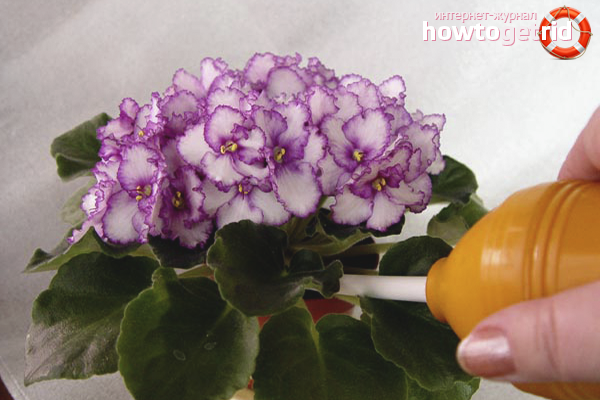
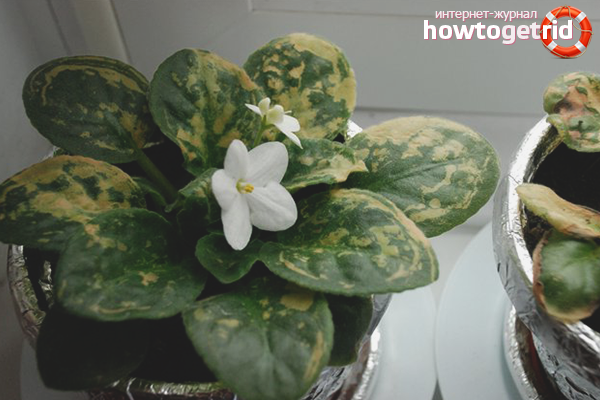
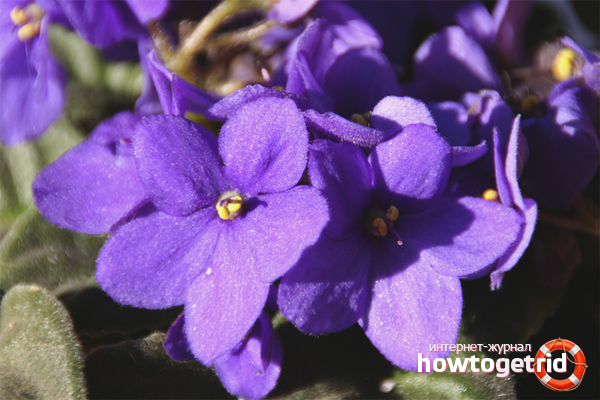




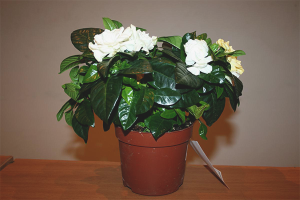



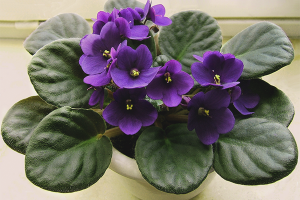
To send